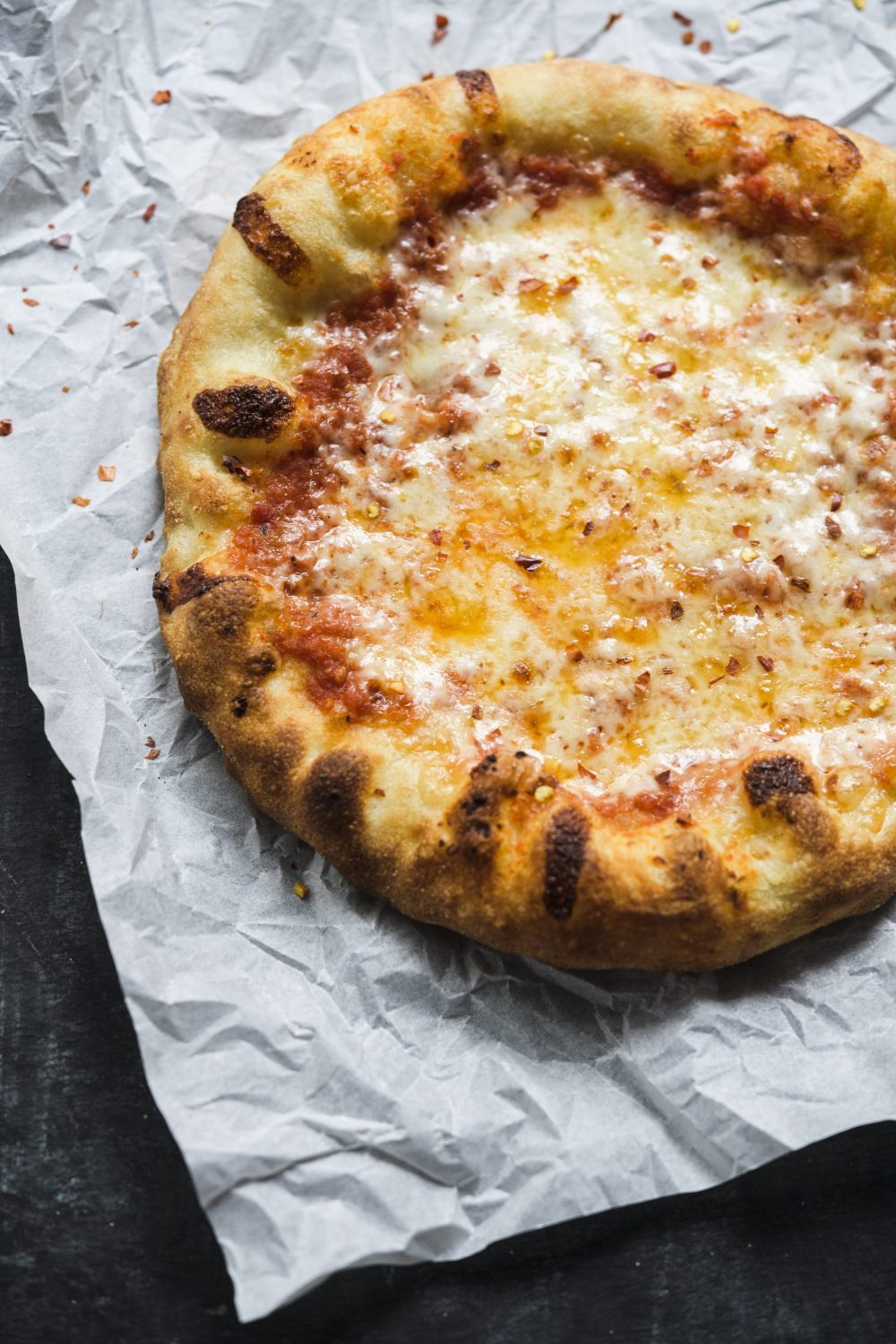Homemade pizza is hard to perfect. A restaurant-worthy crust that’s crisp on the edges and chewy inside doesn’t just happen by throwing dough in the oven and hoping for the best. Toppings, too, require attention, lest extra moisture turn the crust soggy. (We’re looking at you, mushrooms.)
Buying a pizza oven will help get you part of the way there, and our partners at Ferguson have everything you might be looking for, whether it’s a wall mount oven, as in this GE stainless steel pizza oven; an outdoor oven, like the Alfresco pizza oven; or something versatile, like the Lynx “Napoli” oven, which can be built in, countertop or bought with a cart for outdoor use. But conventional ovens will do the job, too, if you follow a few guidelines.
At Milk Street, we’ve settled on five smart tips for better pizza at home, including the best surfaces on which to cook and how to prep them, the best position in the oven, the best way to handle dough and the best temperature—but we're not just referring to the temperature in the oven… Our tips apply to both conventional ovens and pizza ovens alike. Watch the video below to see how it’s done. Your takeout bill is about to decrease significantly.
Location, Location, Location
Position your rack in the upper-middle part of the oven. This better heats the baking stone and cooks the toppings more efficiently. (It’s also easier to slide the pizza off the steel when the rack is in a higher position.)
Put Down the Stone
It’s time to break up with your pizza stone and pick up a steel. Baking steels get hotter than stones do, they stay hotter when you open the oven door and they conduct heat better.
Warm Up
Pay attention to temperature, but not just inside your oven. The temperature of the dough is important, too, and we found that it should reach 75 degrees to stretch properly. Place dough in a bowl, and place that bowl into another one filled with warm water. Keep replacing the water until the dough has risen to 75 degrees.
Stretch
Speaking of stretching… stretch the dough by hand, don’t roll it out with a rolling pin. The latter flattens and toughens, while also expressing gasses that form during fermentation, which contribute to flavor and texture. Instead, gently pull the dough in a circle (watch how it’s done in the video) for best results. Toss at your own risk.
Cover Your Bases
If you don’t have a steel, don’t worry. You can use a rimmed baking sheet, large cookie sheet or wood cutting board, too. Just be sure to dust whatever surface you’re using with plenty of flour or semolina to prevent sticking.
Now try your hand at one of our pizza recipes:
Roasted Mushroom Pizza with Fontina and Scallions
White Pizza and Arugula
Three-Cheese Pizza
>




